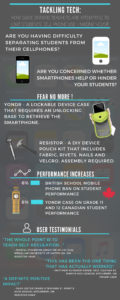After reading and analyzing eCampus Ontario’s open PD modules, I decided to create an infographic using Piktochart, a medium I have yet to use. I personally find infographics to be the most appealing and well-read due to its organized layout, thus I wanted to create something of my own to interest readers. Being it my first time using Piktochart, I found it easy to navigate and manipulate. I was presented with the option of whether I wanted to use a template or not and found it effortless to put my thoughts and findings into words by use of a template. The medium offers its users access to graphics similar to clipart, as well as the option to upload photos from external sources. In addition to this, the site also enables for customization through different background colours and patterns, and multiple font options. Though I created an infographic with ease and without running into any drawback, I quickly noticed a small icon that states, “Level Up”, wherever an upgrade payment is needed to access premium features. These features included colour schemes, additional templates, password protection and watermark removal – all things that honestly did not interest me in this particular assignment.
Prior to exploring the modules, I believed I was well aware of technology integration as I have done so in my previous placements, and experiences supply teaching. My knowledge on this subject has quickly changed from adding in a video, or an interactive activity to my lessons, to now using technology to benefit my learners and their needs. The technologist module of design thinking follows the steps of Empathize, Define, Ideate, Prototype, and Connect. In outlining the Technologist modules for my infographic, I became excited to use the steps in my future classroom. Something I particularly enjoyed about the modules was its use of examples on how to facilitate the activities provided.  When thinking of the SAMR model while perusing the Technologist modules, I thought of a way in which I have both enhanced through substitution and augmentation in my personal teaching experience. During an English Language task, I offered my students the option of hand writing or typing their assignment via Chromebook. In addition to this, I can also recall a scenario in which I provided a student with access to a voice-to-text programme to aid them in a written piece.
When thinking of the SAMR model while perusing the Technologist modules, I thought of a way in which I have both enhanced through substitution and augmentation in my personal teaching experience. During an English Language task, I offered my students the option of hand writing or typing their assignment via Chromebook. In addition to this, I can also recall a scenario in which I provided a student with access to a voice-to-text programme to aid them in a written piece.
This module has provided me with the understanding that technology can implement differentiation in the classroom.  In future, I will incorporate technology into my lesson plans by referencing the SECTIONS model. I plan to focus on the needs of my students when choosing a tool, and always.
In future, I will incorporate technology into my lesson plans by referencing the SECTIONS model. I plan to focus on the needs of my students when choosing a tool, and always.
Below you’ll find my summarization of eCampus’ modules by form of an infographic.


